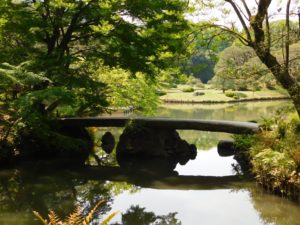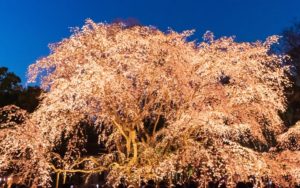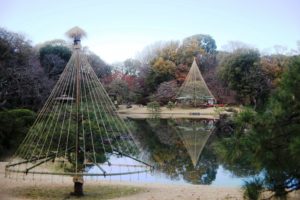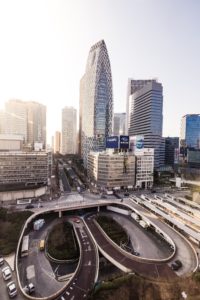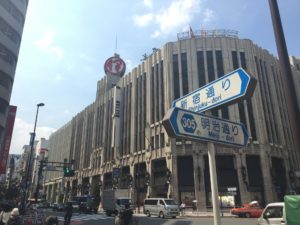Ueno Park is built on the hill called "Mount Ueno" and is located right next to the Ueno Station. The Park opened in May 1876 as the first Park in Japan. Thanks to various outstanding cultural facilities such as museums, zoos, and art colleges all gathered in one Park, Ueno has become one of the unique areas in the world. The Park has survived despite the two significant devastations by the earthquake and war because people have loved the Park and protected the culture. If you know its history, you'll enjoy exploring the area more.
Mount Ueno had preserved vast nature as the site of Kaneiji Temple since the Edo period(1603-1868). This place has been popular as a famous cherry viewing spot in spring and was registered as the first Park in Japan in 1876. However, the Park has gone through a series of twists and turns to date. In 1872, the Ministry of Military decided that the site of the Temple should be remodeled as the Army Hospital and Army Cemetery. However, Dr. Baudwan, a Duch military doctor, was firmly against the idea and encouraged the government to open a park. Thanks to his effort, we can enjoy the current Ueno Park.
Entering the Meiji era(1868-1912), the wave of the industrial revolution due to modernization swept at a stretch. The country's first National Industrial Exhibition was held at Ueno Park in 1877, aiming at the development of domestic products and industry. The exhibition gathered more than 84,000 items. The latest technologies, such as windmills, lathes, and looms, were introduced there. The recorded attendance figure was more than 460,000.
From the 4th time onward, the stage of the Expo moved to Osaka and Kyoto. But at Ueno Park, "the Tokyo Business Expo" was held in 1907, and the "Tokyo Taisho Expo" was held in 1914 instead. Watershoots appeared in Shinobazu Pond, and Japan's first escalator was installed from the plateau of Ueno Park to Shinobazu Pond. Ueno was the area of the cutting edge of Japan's manufacturing culture.
The Meiji was an era of civilization, and various cultures were imported from all over the world. The predecessor of the Tokyo National Museum moved from Uchisaiwaicho in 1882. Okakura Tenshin opened "the Tokyo Fine Arts School" in 1887, which was the predecessor of Tokyo University of the Arts and produced notable artists, including Yokoyama Taikan. Furthermore, the symbols of Ueno that continue to this day, such as "Ueno Zoo" and "the Statue of Saigo Takamori" by Komura Takamura, were created.
However, a significant earthquake hit Tokyo in 1923. The estimated magnitude was M7.9. It killed more than 105,000 people and caused enormous damage to downtown areas, including Ueno. Many people evacuated to the Ueno so that they could escape from collapsing and fires.
Immediately after the earthquake, many people put posters on the Saigo Statue to look for the missing people. Ten thousand temporary houses, some distribution centers, daycare centers, and hospitals were built in the Park. Six years after the earthquake, Yasukuni Street and Showa street were installed in Tokyo, and the city gradually recovered from the devastation. To commemorate it, "the Imperial Reconstruction Festival" was held in 1930. The parade started at Zojoji Temple and ended in Ueno Park. Those who lost everything because of the disaster felt the revival of Tokyo by seeing the crowds.
However, the vivid history was repainted into a dark era by the war. In 1943, in response to the slaughter order in preparation for the mainland air raid, Ueno Zoo disposed of predators such as elephants, lions, tigers, bears, and leopards. During the war, the First Division of Fire Command Center was set up in Ueno Park, and Shinobazu Pond was transformed into a paddy field. The war deprived people not only of their lives but also the culture and landscape. During the Tokyo air raid, many refugees and victims evacuated to the air-raid shelters and vacant lots in the park. Similar to the Great Kanto Earthquake, Ueno Park played a significant role as an open space for disaster prevention.
The air raid destroyed Ueno again. After the war, black markets opened in Ueno, and it developed into the current Ameyoko(A broad shopping street near the park). Public safety was deteriorating due to the increase of street children, prostitutes, and those who sought for food, and violence frequently occurred.
The Ueno Shosei-Kai, later known as the Ueno Tourism Association, made every effort to bring Ueno back to normal. 1,250 cherry trees were planted to restore the scenery, and the Shinobazu Pond, which had been used as a paddy field, was renovated to what it used to be. In the 1955s, Ueno Station became the gateway for young people who came from Hokuriku and Tohoku regions for mass employment.
The waves of art also flew into the Park. "The National Museum of Western Art," which was designed by Le Corbusier, opened in Ueno in 1954. The facility was designated as a World Heritage Site along with Corbusier architecture in each country. Maekawa Kunio, a disciple of Corbusier, built the "Tokyo Metropolitan Festival Hall" in front of the museum. The hall was intended to be in harmony with the architecture of his master. A little later, "The Ueno Royal Museum" opened in 1972.
Even in the Heisei Era, Ueno Park has opened various culture facilities one after another. ; "The Gallery of Horyuji Treasures" (1998), "Tokyo National Museum Heiseikan" (1999), "The University Art Museum, Tokyo University of the Arts" (1999), and "International Library of Children's Literature" (2000).
Tokyo Metropolitan Art Museum reopened in 2012 and, and dining facilities such as Starbucks and Parkside Cafe were established in the fountain area. Ueno Park is still transforming a place to provide healing to anyone of all ages and various people visiting from all over Japan and abroad.

















